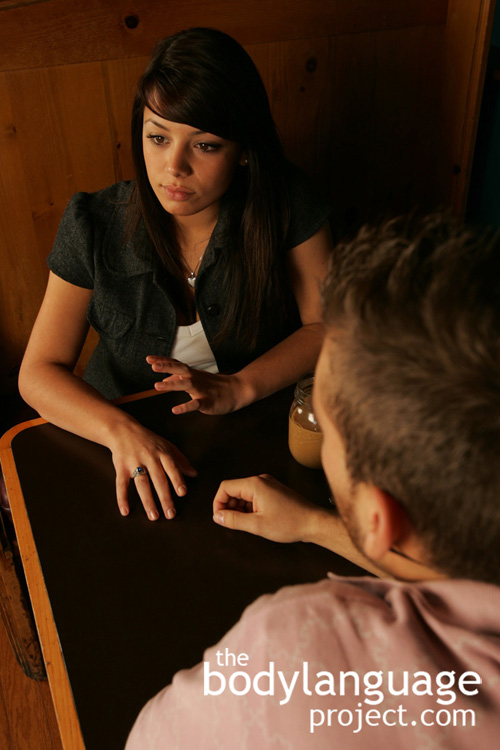
A classic evaluative gesture done by producing an “L” shape with the thumb and index fingers, but where the chin is not carrying any weight.
We can measure the level of interest or negativity our listeners have by how much pressure is held by the hand during conversation. Under average evaluative body language, the index finger is placed to the side of the head and only lightly supports the weight of the head, or the hands are left and placed on the table with palms up or uncrossed to the front of the body. When the hands touch the face and interest is present, the index and thumb will form an “L” shape and the chin is placed in the crux of the “L” but is not supported by it. Conversely, with genuine interest, the hand will barely touch the side of the face. In this case, the hand curls and the knuckles gently rests against the side of the face, and in other cases, the hand remains open with the finger tips of the index and middle finger gently resting on the cheek. As the listener becomes bored or tired, the hand will bear more and more of the weight and the body will seem to slump completely over the hand and be supported by it. As boredom sets in, the thumb will move under the chin to help the person hold their head even further, or the chin will seem to compress into the palm. When the index finger is found playing with or rubbing the corner of the eyes it indicates fatigue or disbelief as in “I can’t see that.” Movements to the eye like also serve to show negative thoughts and emotions. We should be careful to watch for them.
Seeing these cues develop tells us that it’s time to change the subject to revive interest, change locations to get the blood flowing again, or take a break to try to recover, and in extreme cases, throw in the towel and give up. Boredom is a negative thought indicator and the cues used to indicate it tell us that rapport is being lost between the listener and the speaker. Interested individuals inject themselves and their body completely into the conversation, rather than detaching themselves.






